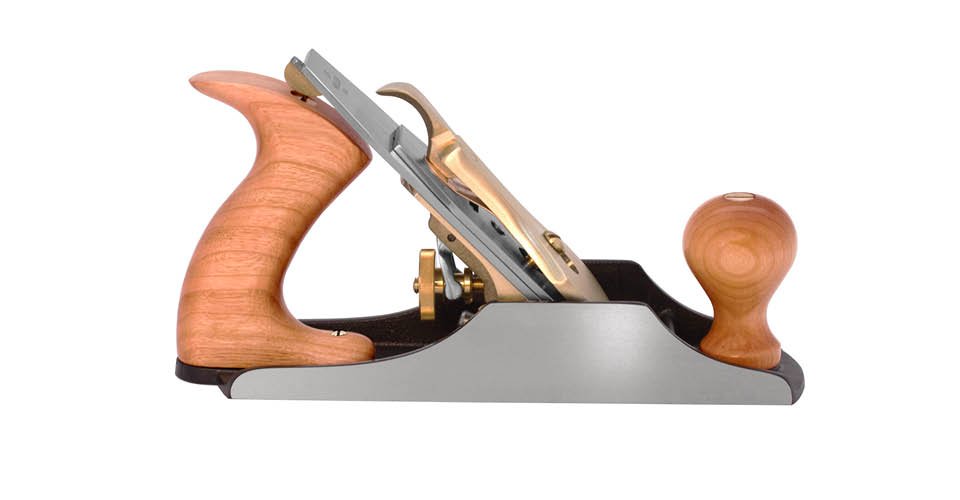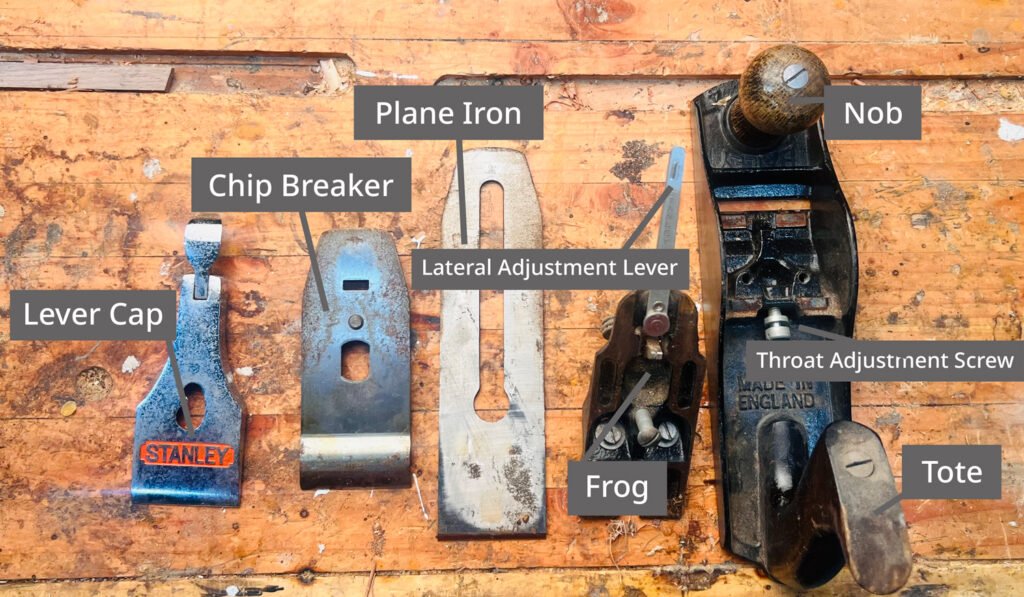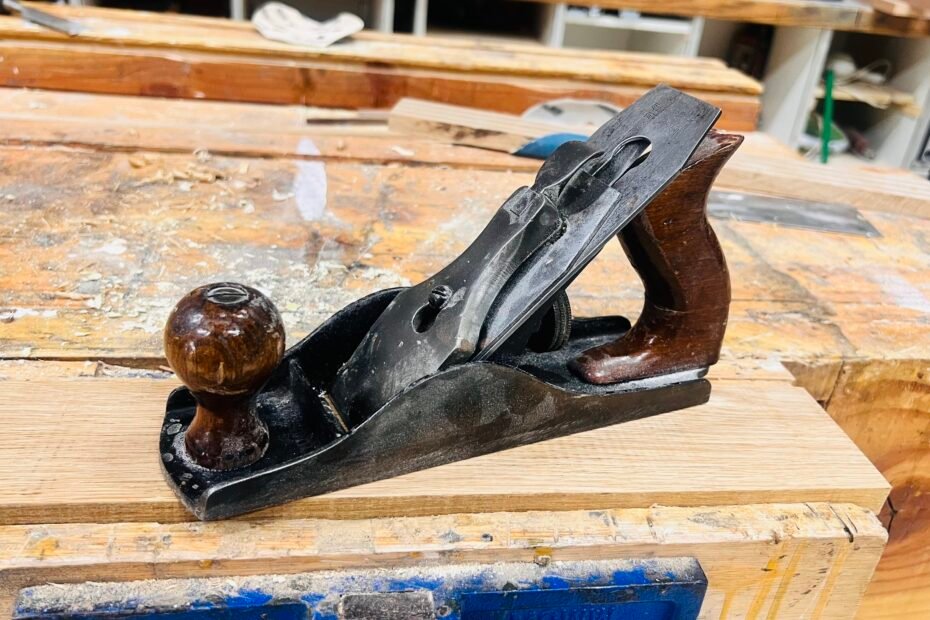In the woodworking world, there's always a new, flashy tool on the horizon promising transformative results. We've all experienced buyer's remorse after initial excitement fades, realizing the newest gadget isn't as revolutionary as advertised. However, some tools genuinely stand the test of time, consistently exceeding expectations.
Though the market is flooded with countless options, I'll offer recommendations both for woodworkers unrestricted by budget and for those who must carefully consider costs.
In my experience, the most indispensable plane is the #4 smoothing plane. Its versatility makes it perfect for multiple tasks: edge jointing before using a jointer or table saw, smoothing large surfaces to reduce—or even eliminate—sanding, quickly softening sharp edges, or adding chamfers faster than setting up a trim router.
The Best Number 4 Smoothing Plane
Premium Pick: Lie Nielson No. 4 Smooth Plane
It's beautiful, functional and based on a classic design that has worked for generations
This plane will cost you a pretty penny, $375 and they also have a Bronze version that will cost you $495

This Plane is designed after the classic Stanley Bedrock planes.
In my opinion, I don't think it's worth buying a brand new plane just for the simple fact that it will be set and perfectly honed out of the box. With hand tools, it's a given that in order to keep them working they need to be sharpened, tuned and set continuously to keep them in good working order.
That being said if you enjoy having a new tool, that looks and functions great out of the box then the Lie Nielson is for you.
Lie-Nielsen bench planes follow the tradition of Stanley's premium Bed Rock series, known for their heavier construction, superior machining, and unique frog adjustment mechanism. This feature allows easy adjustment without removing the blade, transitioning effortlessly between coarse and fine settings—ideal for precision smoothing tasks or challenging wood grains.
Budget Pick: The Stanley Bedrock and Bailey #4
Naturally, the next pick would be the original Stanley Bedrock and Bailey# 4.
If it's your first plane, I would choose this one as it is a great learning lesson to familiarize yourself with all of the components and how they work together.

To give a little bit of history the design features of the Bedrock line for Stanley were introduced to the Bailey line as well in 1907.


“The absolute solidity and one-piece effect of the ‘BED ROCK’ PLANE is as much a fact as if the parts were all one, for the reason that the entire under surface of the Frog is in perfect contact with the solid seat cast in the Plane Bottom. The frog and the Bottom are so perfectly fitted together that from the Plane Iron to the Bottom, the Plane is as one solid piece of metal. This form of construction positively prevents any chance of vibration.”
Additionally, the Bed Rocks originally featured the frog adjustment mechanism patented by Schade on September 3, 1895, which later became standard on the Bailey line in 1907. Stanley described this feature in their catalog as follows:
“The width of the mouth may be regulated and made wider or narrower as coarse or fine work may require. First remove the lever and cutter and loosen the two frog screws that fasten the frog to its seat. With a screwdriver, turn the center adjusting screw to the right to close the mouth, and to the left to open it. When the frog is in the desired position, tighten the frog screws and replace the cutter and lever.”

You can find these planes on ebay, facebook marketplace, or other secondhand sites. They will likely be in varying states, some rusted and neglected and some abused. So long as all the components are there, you can quickly make a secondhand plane functional and with a little bit of extra work you can make it beautiful and functional.
Cracked handles are a common break in hand planes like this, but this can easily be fixed with a little bit of glue and some smoothing with sandpaper and a rasp. Watch out for cracks in the plane body and or missing parts.
The best Low-angled block planes
Block planes are often used for detail work and where it would feel awkward and cumbersome to have a larger plane. Think flush trimming plugs and dowels, cleaning up end grain, cleaning up glue squeeze out and taking off a sharp edge on a small workpiece.
What to look for
Block planes can be somewhat of a mystery to new woodworkers. They look a little bit different than other handplanes and it can be somewhat unclear as to what make a good block plane vs a bad one.
Precision and Adjustability
• Lateral adjustment: This is how your blade sits in the opening and if it's square, if there is no lateral adjustment mechanism you will have to do it by eyeing it as you tighten down the cap iron, this can be a tedious task and makes precise on the fly adjustments impossible.
• Mouth adjustment: This controls how wide the mouth opening is where your blade protrudes, shallow for the fine cuts and wide for more aggressive cutting.
The Norris style adjuster is found in both the Veritas and Stanley model low-angle block planes.
Veritas Low-Angle Block Plane
This low-angle block plane is a pleasure to use, especially suited to precise end-grain work thanks to its 12° bed angle.

Its tall side wings make it excellent for shooting, while integrated finger grips enhance control and comfort during use. The combined blade advancement and lateral adjustment provides unmatched sensitivity and precision, supported by two guide screws that prevent blade shifting during operation.
Constructed from durable ductile cast iron, the body withstands heavy use without damage. The adjustable nosepiece is thoughtfully designed to remain protected within the body, ensuring the blade remains safe even if the plane is accidentally dropped. Machined to the highest standards, the plane features finely milled sides and a surface-ground sole, ensuring superb accuracy and smooth performance.
The Stanley 6-1/4 in BAILEY® Low Angle Block Plane
The Stanley 6 1/4 Low Angle Block Plane
At less than half the cost of the Veritas, the functionality is very similar. However, the bed angle is slightly higher at 13.5º instead of 12º of the Veritas. The machining and overall finish on the Stanley is not as polished as the Veritas but cosmetics such as this might not warrant more than 2x the cost for you.

The Best Jack Plane
The jack plane is one that is not as frequently used as the number 4 or 5 but if you find situation where you need to level large surface areas or need to prepare a long edge for a glue up, the jack plane excels at this.
Premium Pick: Lie Nielson No. 7 Jack Plane
Just like the number 4, this plane comes ready out of the box with a perfectly flat sole and honed plane iron. Using the same mechanisms as its smaller sibling, the number 4, the mechanism is tried and true and gives you precise adjustment on the fly with the depth adjustment and lateral lever adjustment.

Budget Pick: Vintage Stanley No. 7 Jack Plane
I strongly recommend vintage Stanley No. 7 planes over newer plastic-handled versions, which can feel unpleasant during extended use.
With the Jack plane since the sole is over 20in long it is likely you will need to spend some time lapping the sole to get it flat.
I like to glue down a piece of 60 grit sandpaper on a piece of scrap plywood and rub the sole for as long as it takes to get flat.
You can find these planes used on ebay for about $100 - $200.
The same goes for the Jack plane as it does for the smoothing plane, as long as all the components are there you can get this plane into good working order without too much effort, provided your sharpening skills are in good order.
